Lineal Middleweight Champs Since 1941
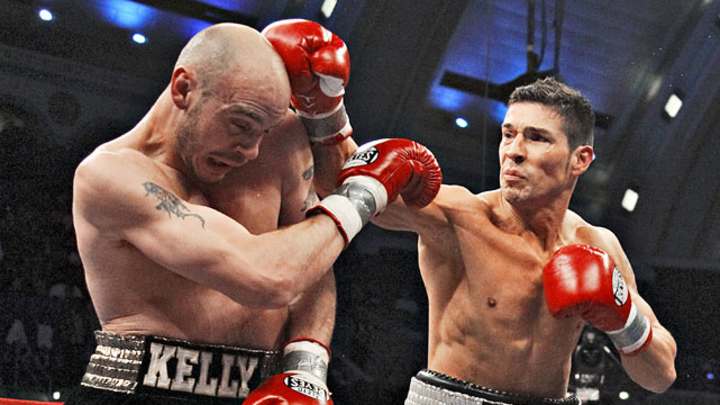
Lineal Middleweight Champs Since 1941
Sergio Martinez

The lineal championship in professional boxing, commonly described as "the man who beat the man," is a notional title intended to clarify the modern hodgepodge of sanctioning bodies and alphabet titles. A boxer can only win the lineal championship by defeating the previous lineal champion in the ring. If the lineal champion retires, dies or moves to another division, the vacancy is typically filled by a box-off between two or more top-ranked contenders. Oxnard, Calif., resident and Argentine expat Sergio Martinez ( right ) inherited the lineal title with a unanimous-decision victory over Kelly Pavlik in April 2010. The 37-year-old southpaw made his fifth straight title defense on Sept. 15 with a unanimous-decision victory over WBC beltholder Julio Cesar Chavez Jr.
Kelly Pavlik

After winning the title with a crushing knockout of Jermain Taylor, Pavlik endured surgeries and life-threatening health problems stemming from a staph infection in between a series of mandatory defenses. His snakebitten reign as lineal champ was cut short with a loss on points to Sergio Martinez.
Jermain Taylor
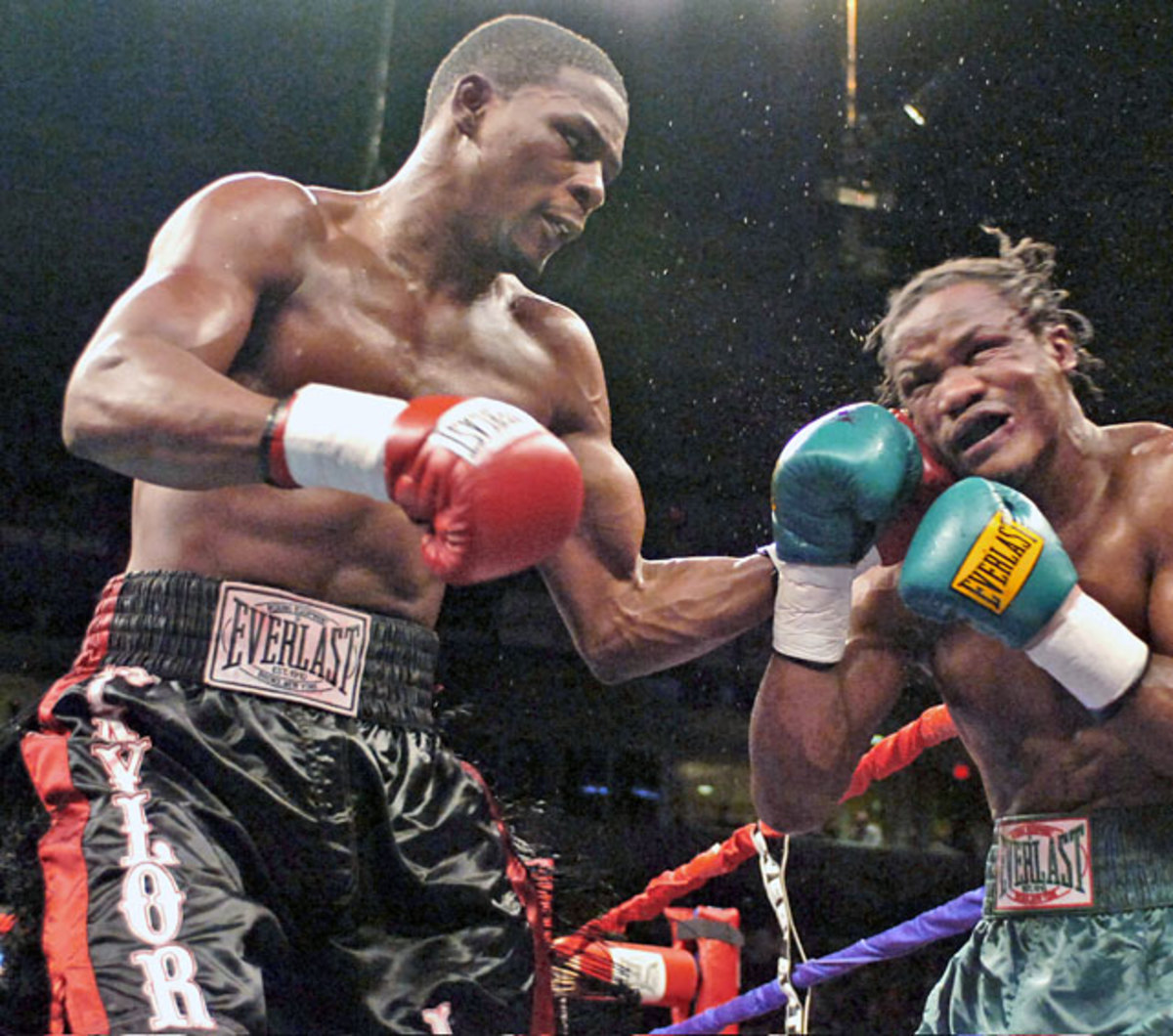
Taylor, who won a bronze medal at the Sydney Olympics in 2000, defeated Bernard Hopkins on a split decision for the undisputed middleweight title. The Little Rock, Ark., native won the rematch with Hopkins, fought Winky Wright to a draw and defeated Kassim Ouma and Cory Spinks before losing the title to Kelly Pavlik.
Bernard Hopkins
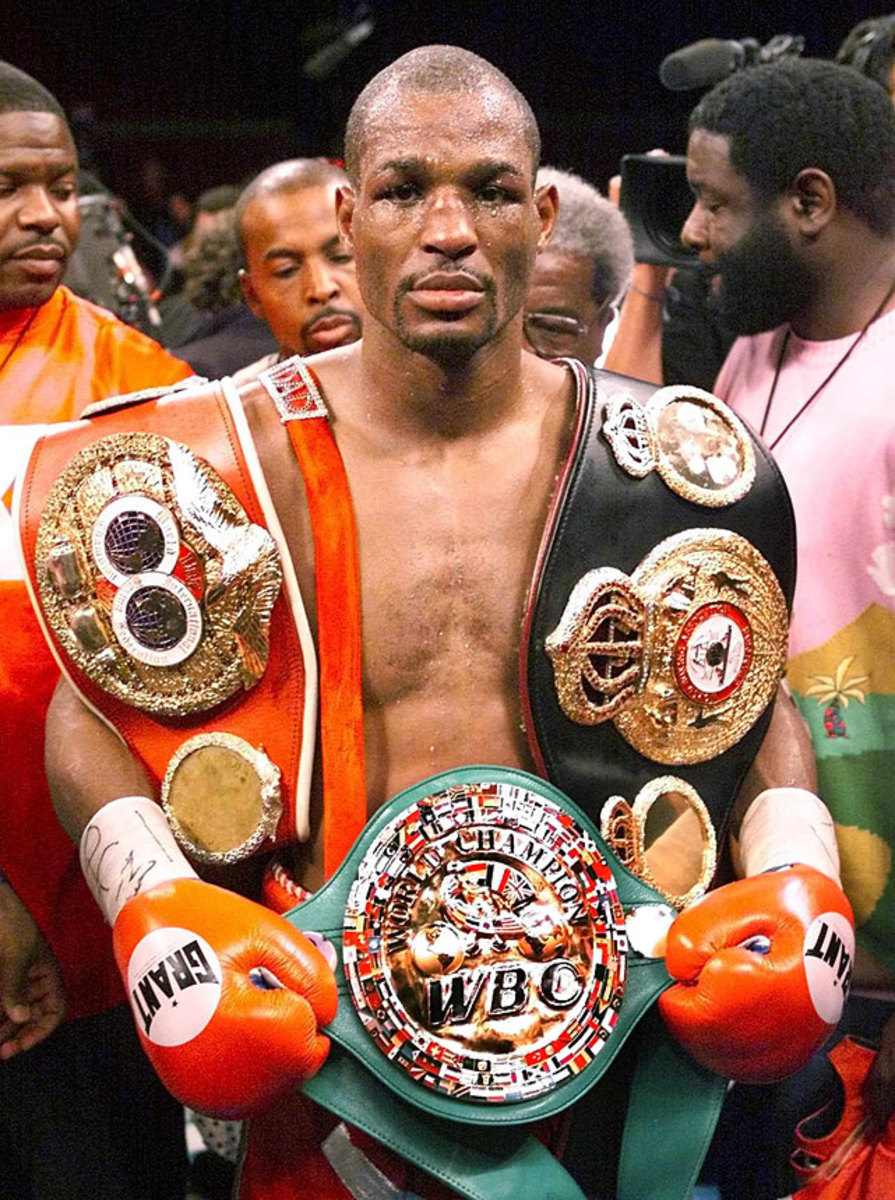
The Executioner, who made a division-record 20 title defenses between 1995 and 2005, finally inherited the vacant lineal championship by winning Don King's much-hyped middleweight unification tournament in 2001. (He upset Felix Trinidad on a 12th-round TKO in the final.) Hopkins lost the title to Jermain Taylor on a split decision, the North Philadelphia native's first loss in more than 12 years.
James Toney
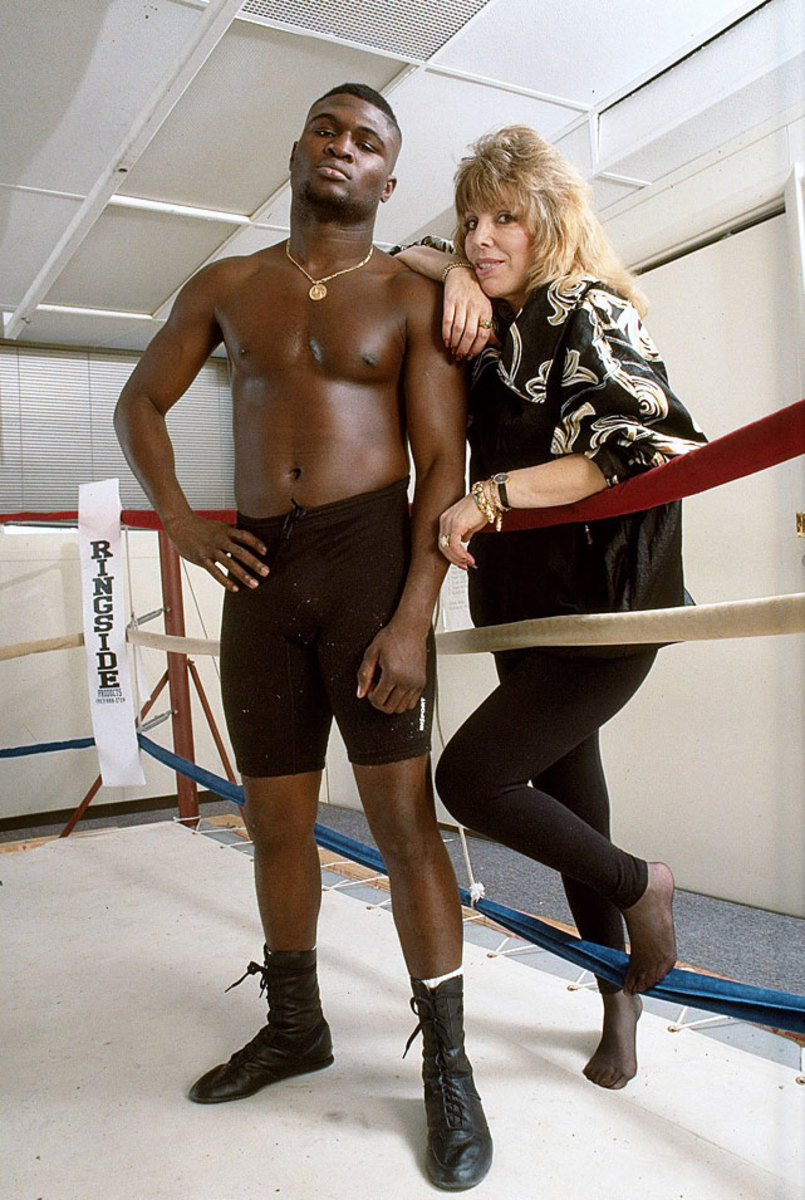
Trailing on all three scorecards after 10 rounds against lineal champion Michael Nunn, Toney ( left, with manager Jackie Kallen ) captured the title with an 11th-round knockout. After a string of title defenses, including wins over Glenn Wolfe, Reggie Johnson and Mike "The Body Snatcher" McCallum, Toney moved up 168 pounds and vacated the lineal title.
Michael Nunn
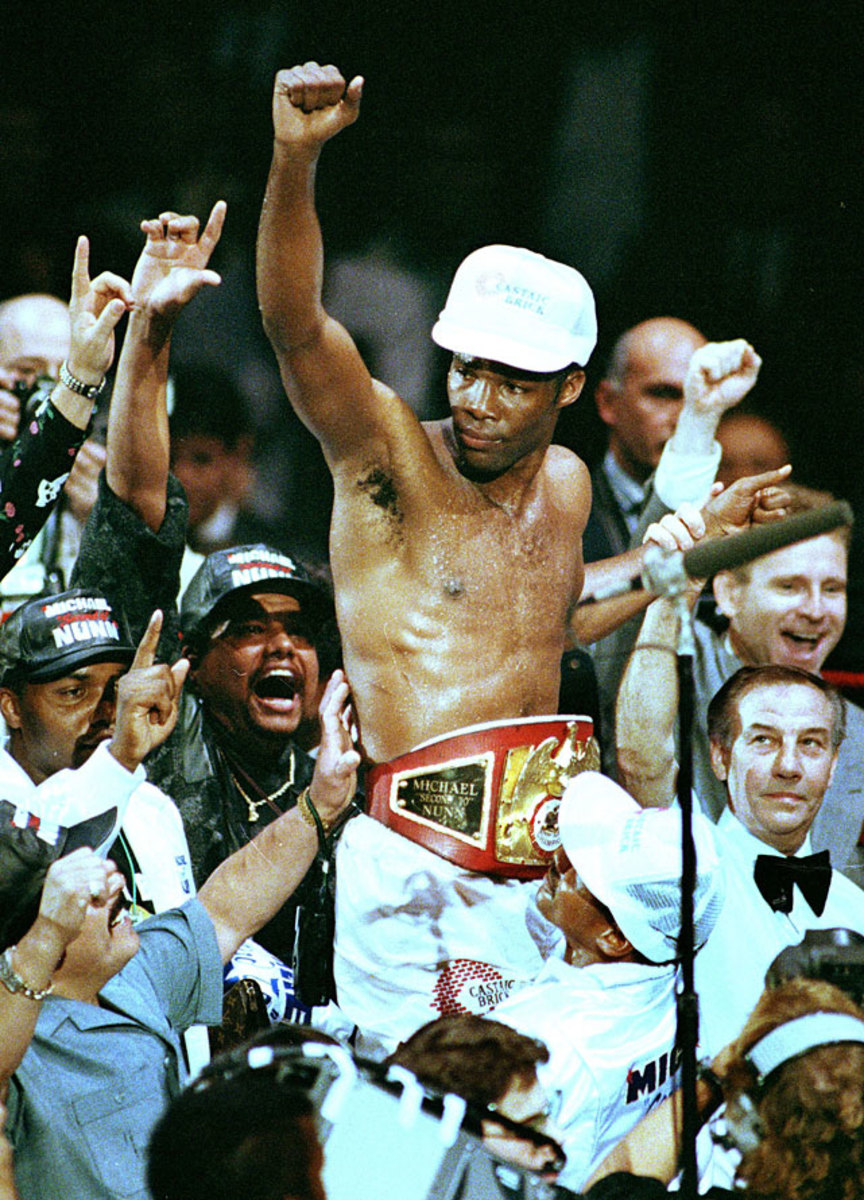
Nunn knocked out undefeated IBF middleweight champion Frank Tate to restore the lineage that was interrupted when Sugar Ray Leonard retired in 1987. He made five successful title defenses before a TKO loss to James Toney.
Sugar Ray Leonard
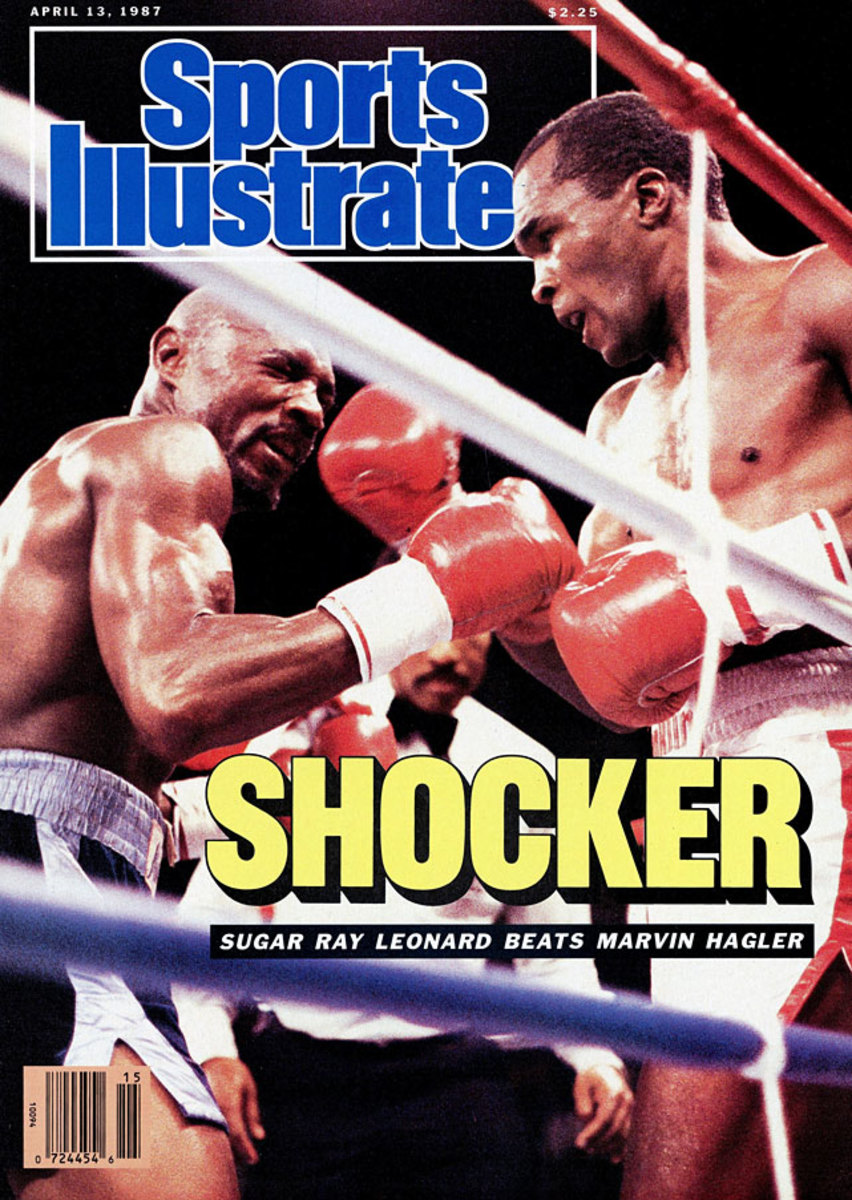
Leonard's first fight at 160 pounds -- after three years out of boxing -- was a successful challenge for Marvin Hagler's WBC and lineal titles. After winning a controversial split decision, Leonard retired until subsequent comebacks in 1989 and '97.
Marvin Hagler
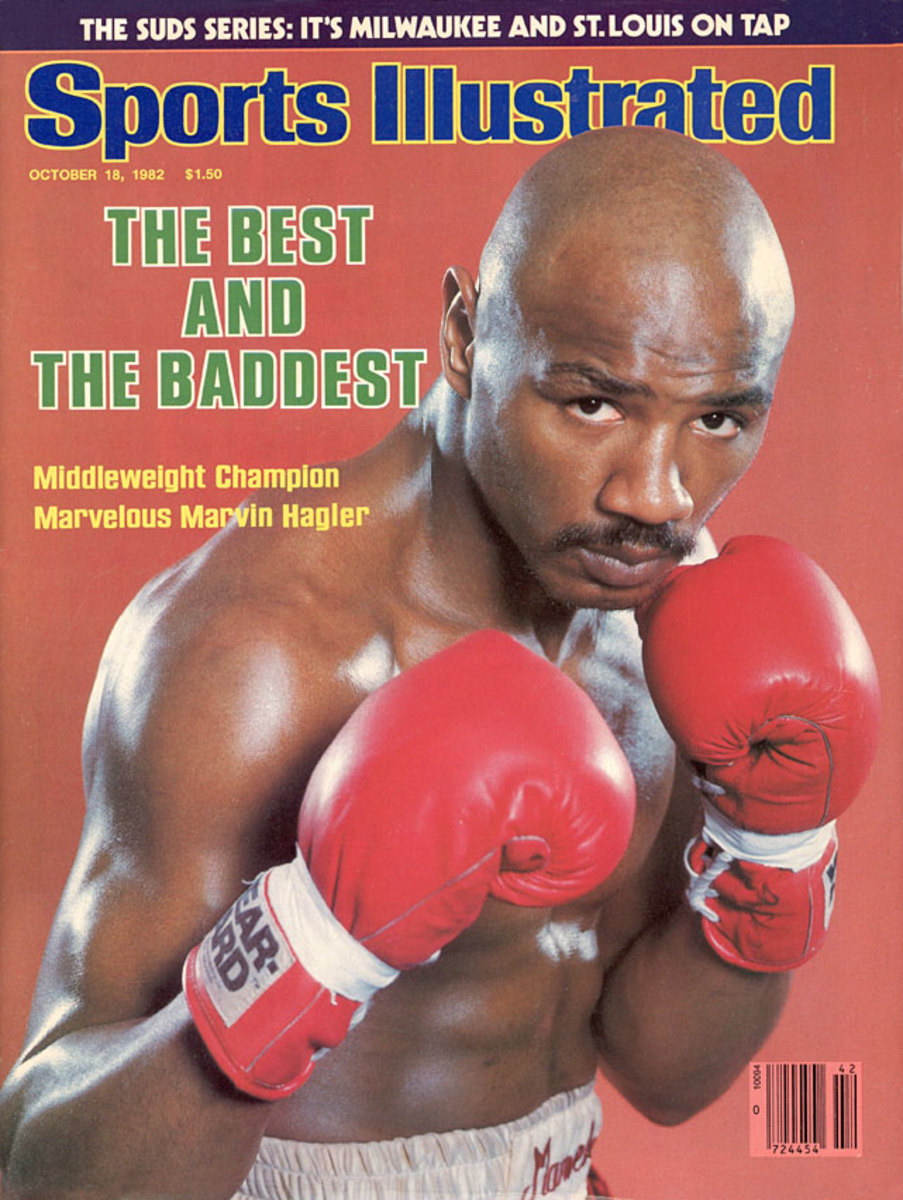
The hard-hitting southpaw was undisputed middleweight champion for seven years, racking up victories against Roberto Duran, Thomas Hearns and John Mugabi. One of the most complete fighters in history, Hagler was never knocked out during his career.
Alan Minter
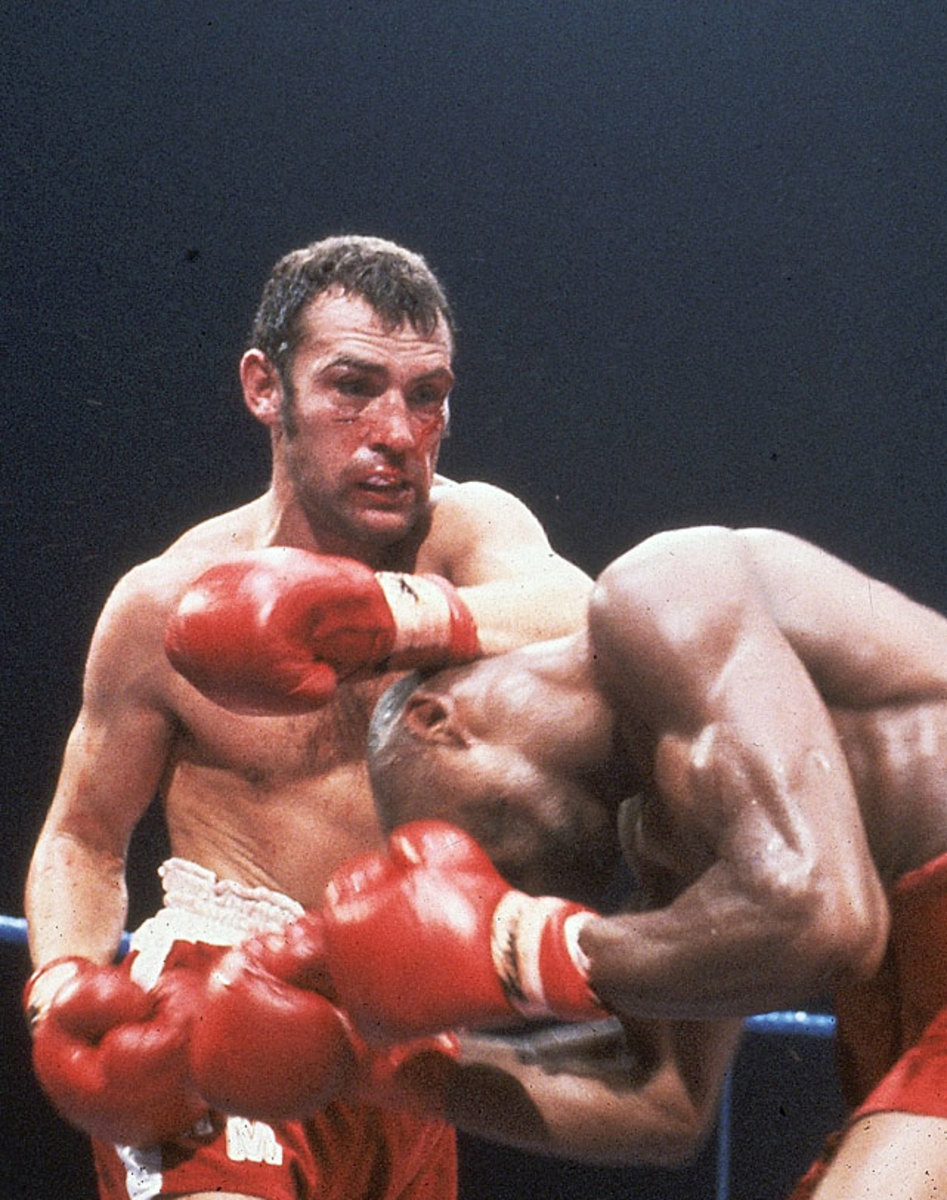
Minter ( left ), an English southpaw who earned a bronze medal at the Munich Olympics in 1972, won a 15-round decision over Vito Antuofermo for the title and retained it on an eighth-round TKO in the rematch. The end came at London's Wembley Arena, where Marvin Hagler stopped him on cuts in three rounds (and a riot ensued).
Vito Antuofermo
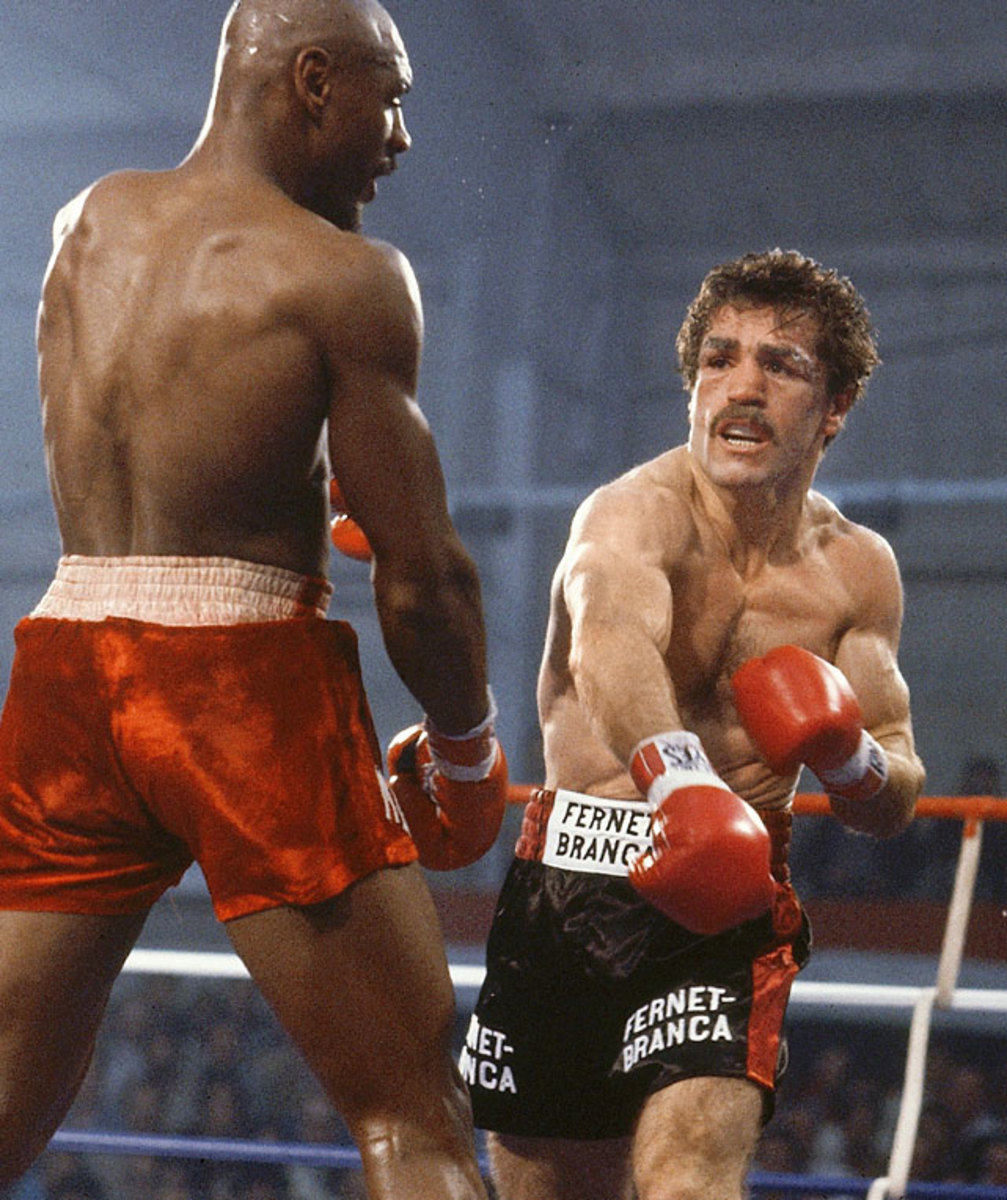
Antuofermo ( right ), who learned to fight on Brooklyn's mean streets after moving from Italy at 17, outpointed Argentina's Hugo Corro for the title in Monte Carlo. The cut-prone in-fighter retained it on a dubious 15-round draw against Marvin Hagler before losing a split decision to Alan Minter.
Hugo Corro
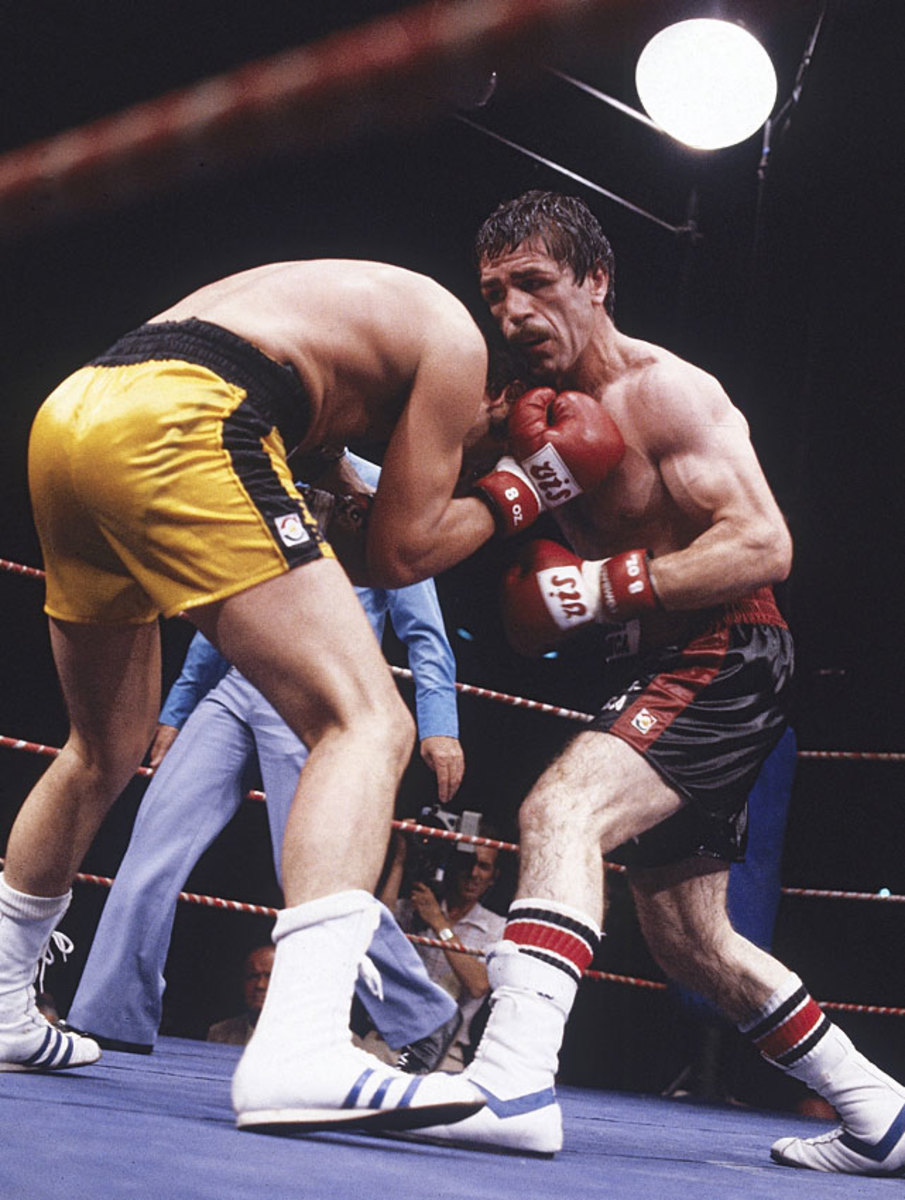
Argentina's Corro ( left, in yellow ) won the title from Colombia's Rodrigo Valdez on a unanimous decision and defended it twice, including a points victory over Valdez in Buenos Aires. After losing the title to Vito Antuofermo on a split decision, he'd go just 3-4-1 before retiring.
Rodrigo Valdez
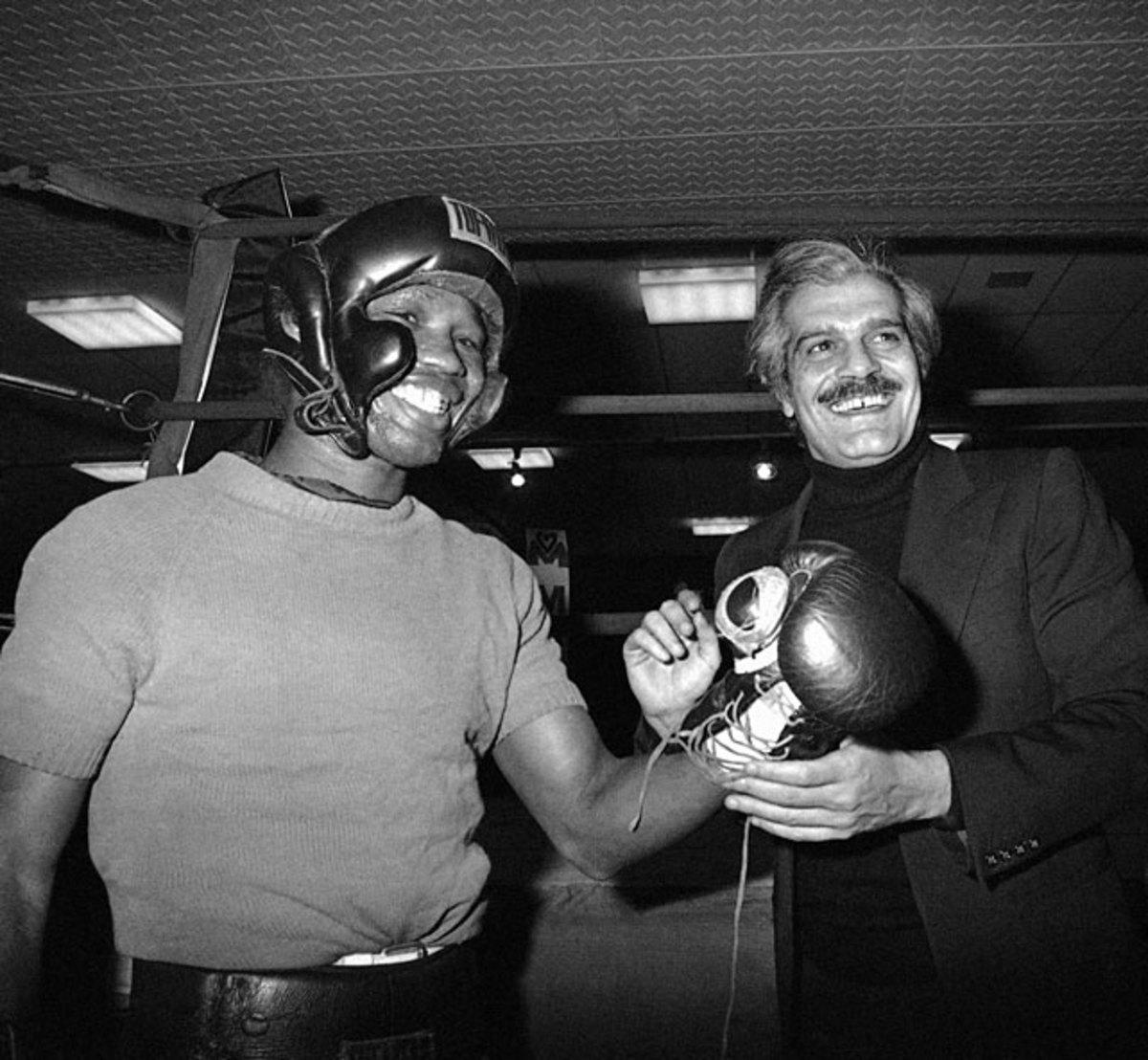
When the legendary Carlos Monzon retired, the hard-hitting Valdez ( left, with actor Omar Sharif ) met Bennie Briscoe for the vacant undisputed middleweight championship. After outpointing Briscoe for the title, Valdez lost it to Hugo Corro in his first defense.
Carlos Monzon
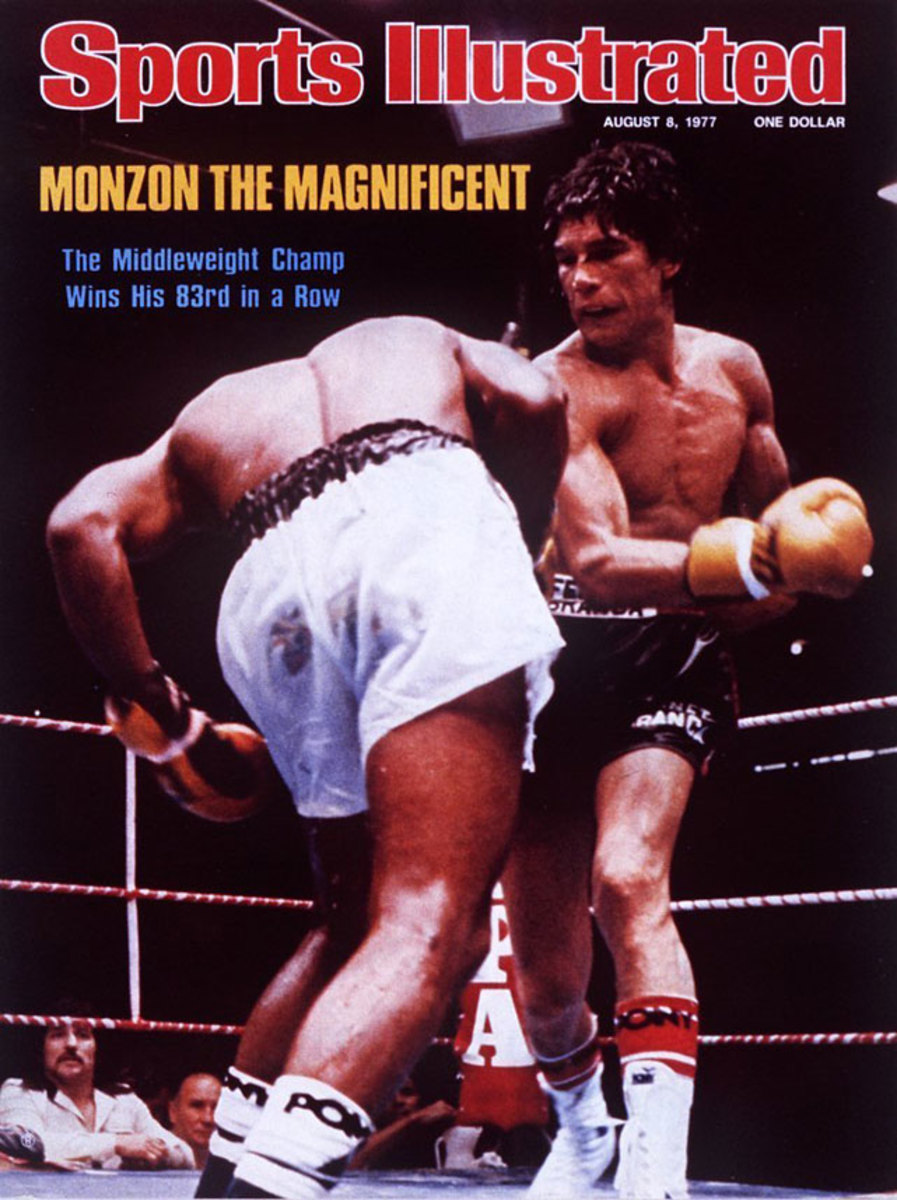
After three defeats in his first two years as a pro, Monzon never lost again. The Argentine legend became champ with a 12th-round knockout of Nino Benvenuti and made a then-record 14 middleweight title defenses against the likes of Emile Griffith (twice), Denny Moyer, Bennie Briscoe and Rodrigo Valdez (twice).
Nino Benvenuti
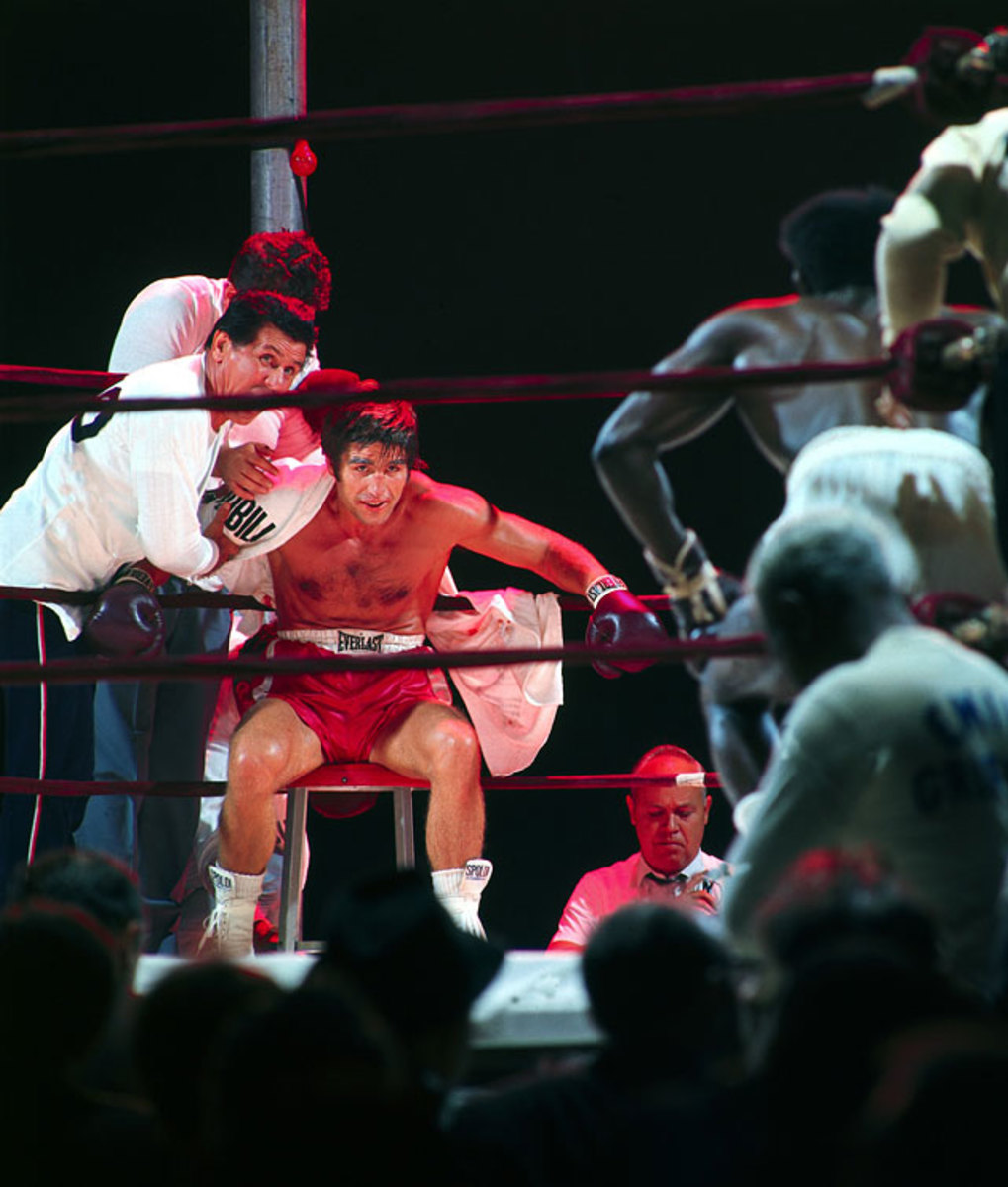
An Italian icon who won a gold medal at the Rome Olympics in 1960, Benvenuti reclaimed the middleweight title with a 15-round decision over Emile Griffith in the rubber match of their famous trilogy. His second stint as 160-pound champ included defenses against Gene Fullmer and Dick Tiger before a knockout loss to Carlos Monzon.
Emile Griffith
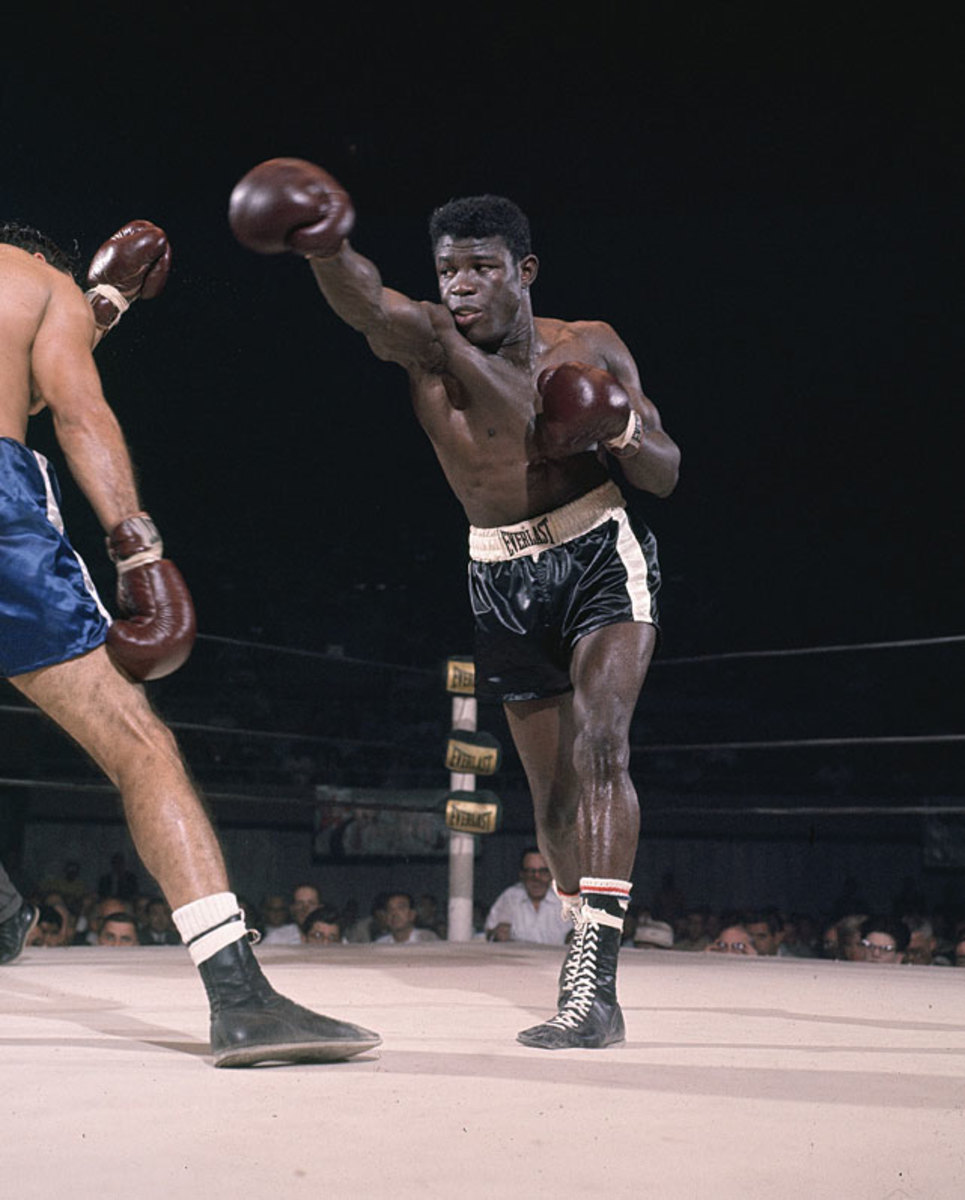
A native of the U.S. Virgin Islands and an adopted son of New York City, Griffith regained the middleweight title from Nino Benvenuti with a majority decision at Shea Stadium and gave it back to the Italian six months later on points at Madison Square Garden.
Nino Benvenuti

After moving up from junior middleweight, Benvenuti outpointed Emile Griffith at Madison Square Garden for the 160-pound title. Ring magazine named it Fight of the Year for 1967.
Emile Griffith

The popular ex-welterweight champ earned a points victory over Dick Tiger for the middleweight title at Madison Square Garden. He defended the title twice against Joey Archer before losing it to Nino Benvenuti.
Dick Tiger
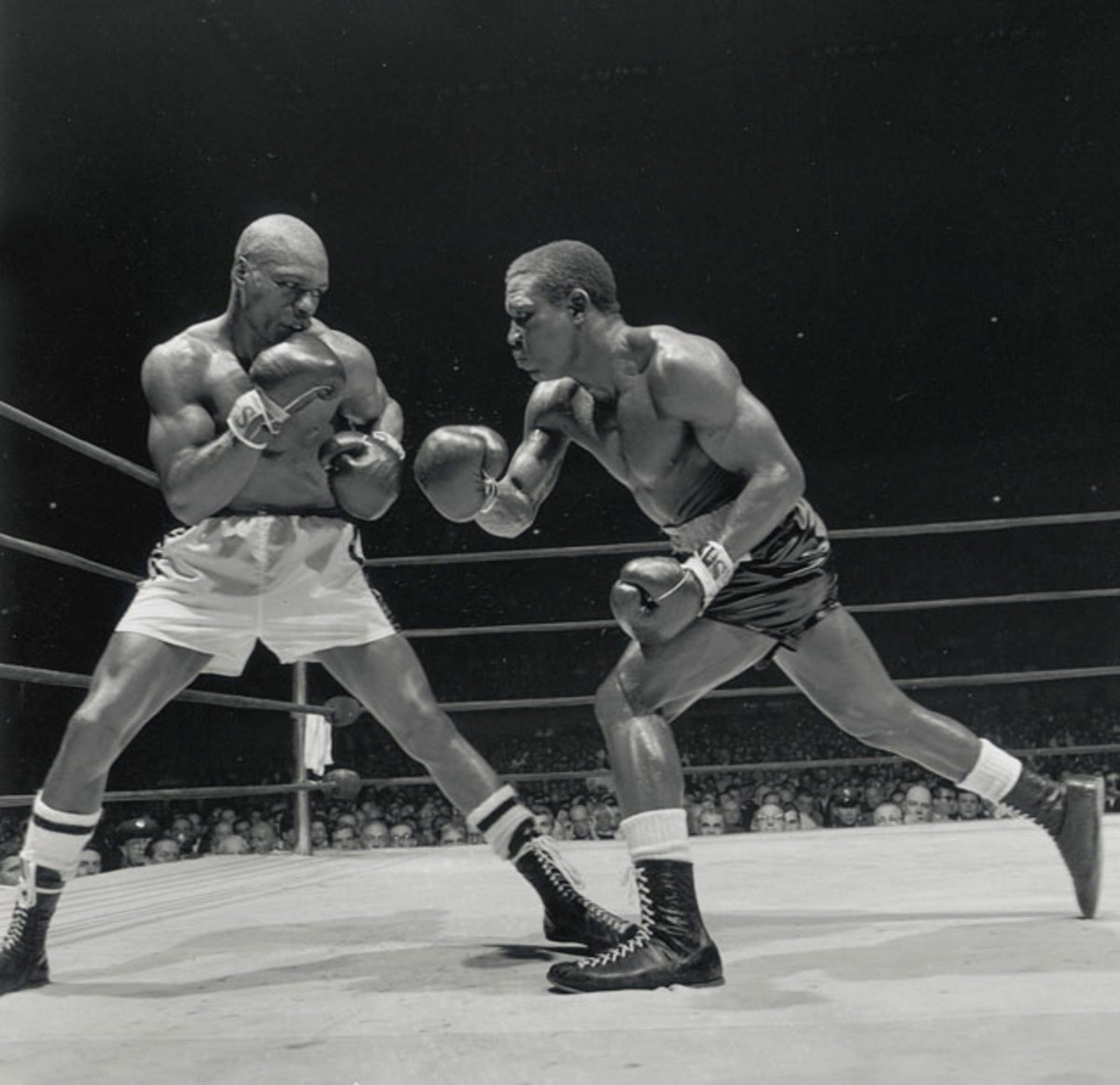
One of the all-time great fighters to hail from Africa, the Nigerian-born Tiger ( right ) regained the middleweight title by avenging a defeat to Joey Giardello. He'd lose it for good to Emile Griffith on a unanimous decision.
Joey Giardello

The Brooklyn-born, Philly-bred crowd favorite didn't win the middleweight title until his 16th year as a professional, outpointing Dick Tiger at Atlantic City's Boardwalk Hall. The future Hall of Famer made four successful defenses over the next two years, including a unanimous decision over Rubin "Hurricane" Carter, before losing the title to Dick Tiger on points.
Dick Tiger

The aggressive counterpuncher met Gene Fullmer at San Francisco's Candlestick Park for the WBA middleweight title that was vacated when Paul Pender retired. Tiger ( right ) decisioned Fullmer for the belt and the pair fought to a draw four months later. Not until a seventh-round TKO of Fullmer in December 1963 did Tiger earn recognition as lineal champion.
Paul Pender
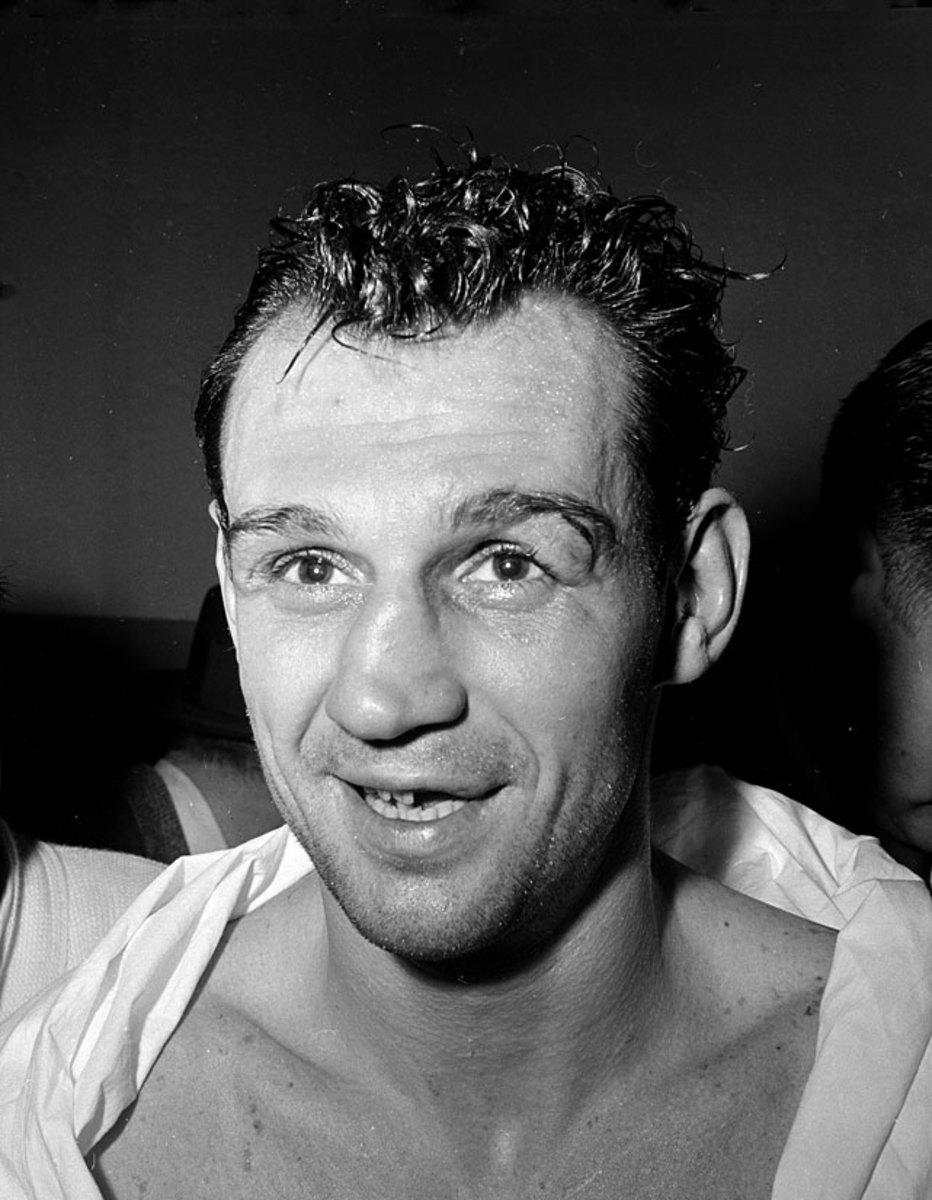
The Brookline, Mass., native regained the middleweight title in his rubber match with Terry Downes and retired shortly thereafter, vacating the title.
Terry Downes
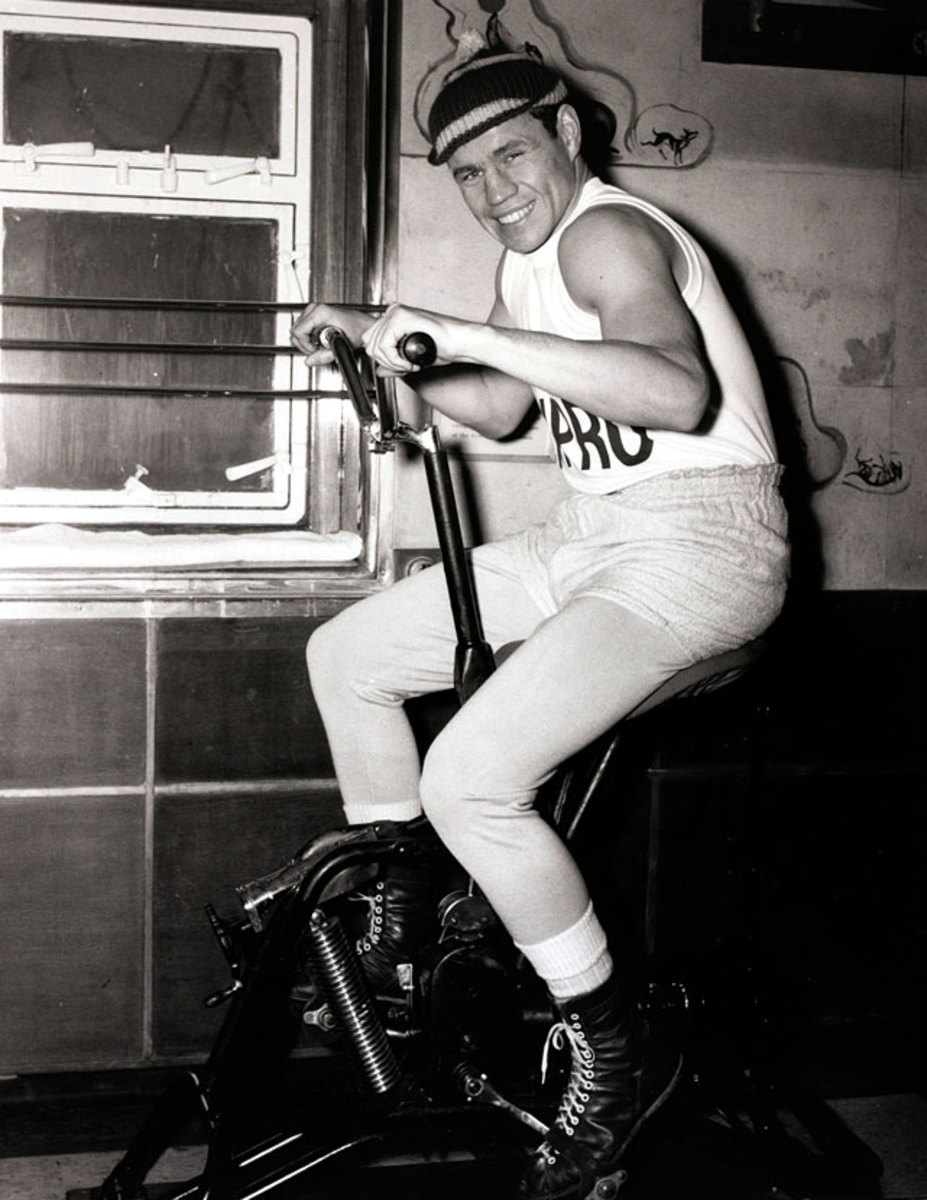
The London native won the middleweight title with a 10th-round TKO of Paul Pender at the Empire Pool in Wembley, but gave it right back in a rematch at the Boston Garden.
Paul Pender

Pender ( left ) outpointed an aging Sugar Ray Robinson for the lineal title in January 1960, retaining it against Robinson in the rematch before defenses against Terry Downes and Carmen Basilio. He'd lose it to Downes in the middle installment of their trilogy.
Sugar Ray Robinson
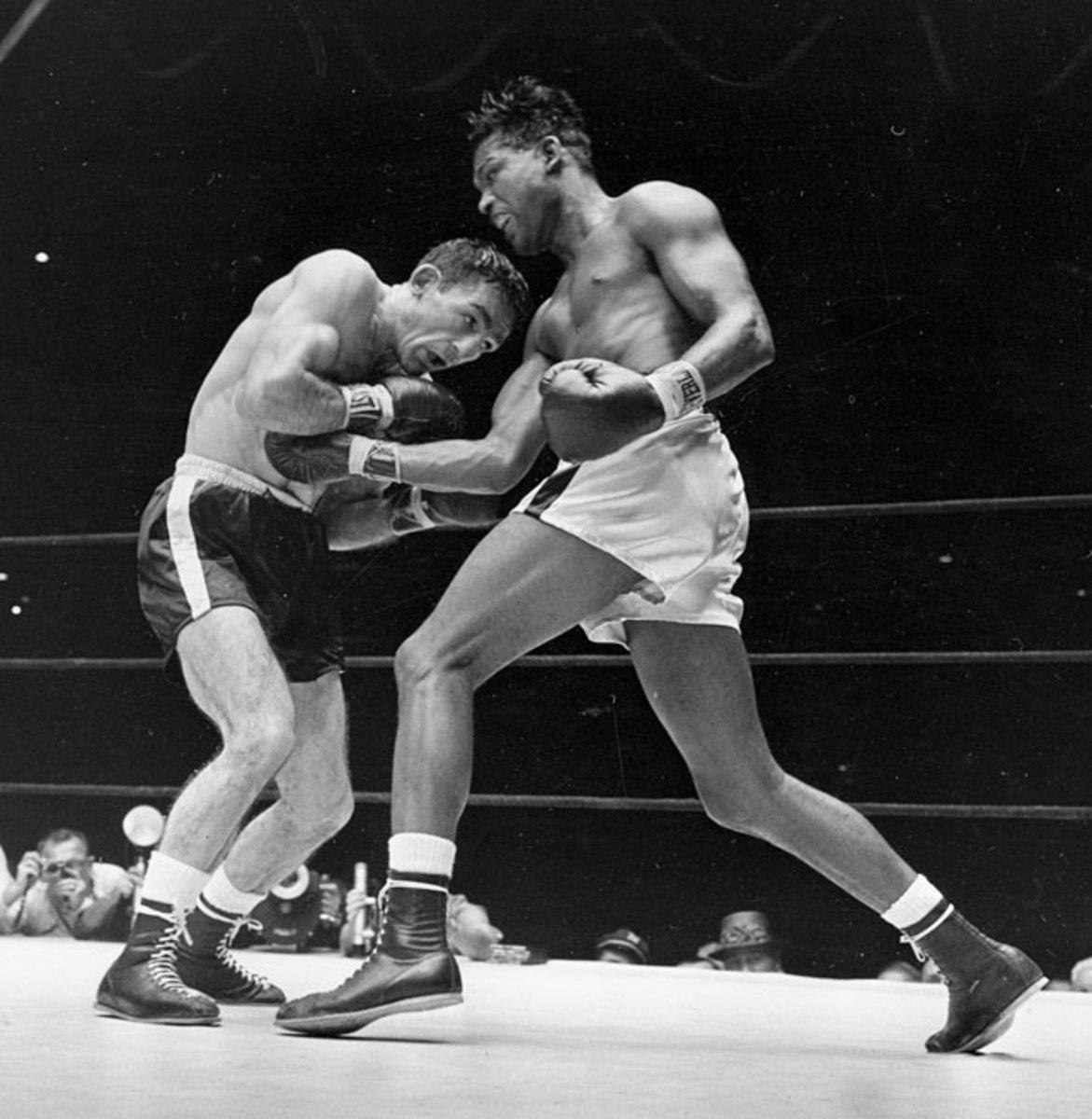
Robinson ( right ) regained the middleweight title a record fifth time with a split-decision victory over Carmen Basilio before 38,000 fans at Yankee Stadium.
Carmen Basilio
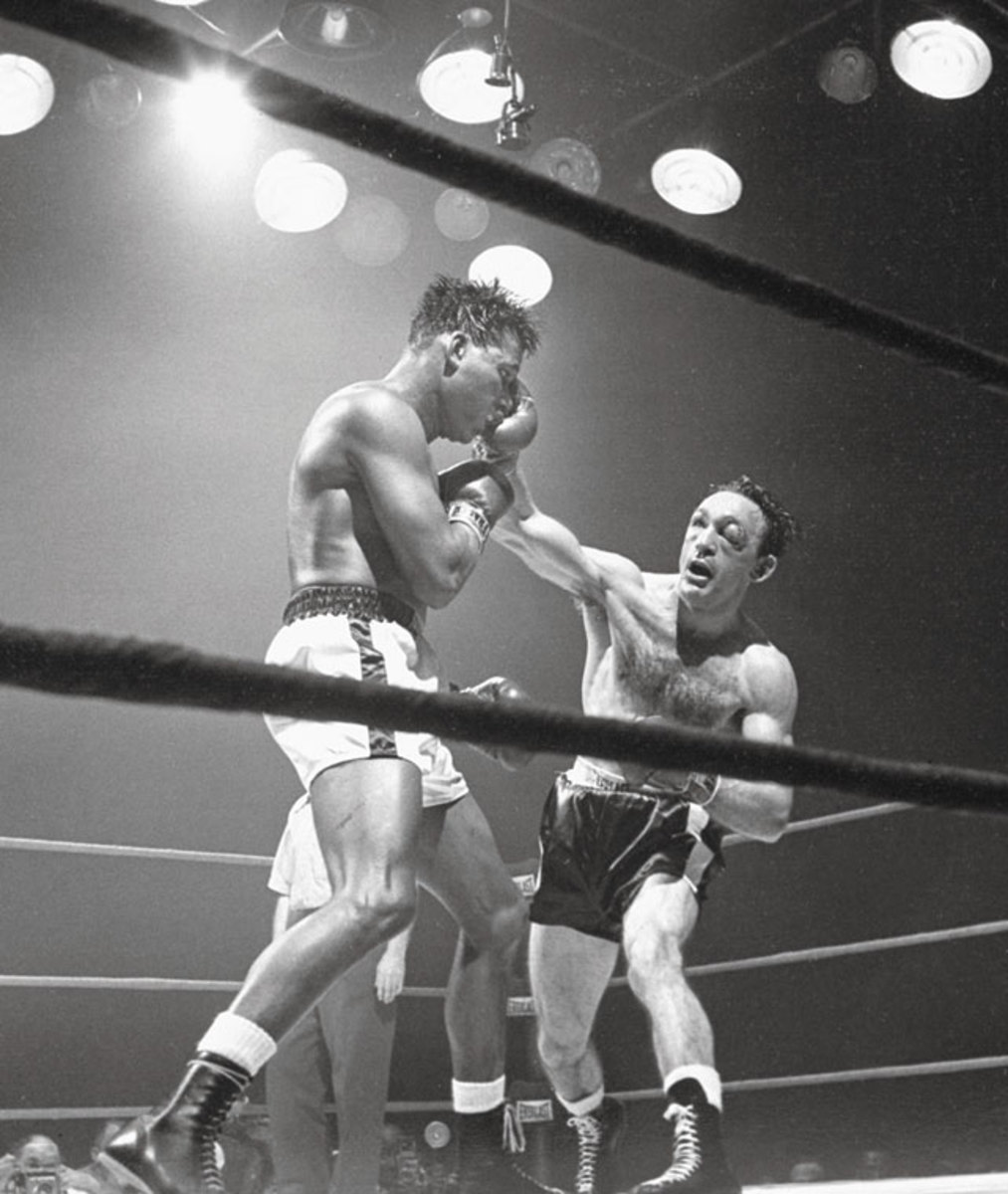
Basilio ( right ) outpointed Sugar Ray Robinson for the title at Yankee Stadium, despite giving away considerable height and reach advantages, in one of the most action-packed bouts of all-time.
Sugar Ray Robinson

Robinson regained the middleweight title a fourth time with a devastating left hook that many boxing observers have called "the perfect punch." It marked the durable Gene Fullmer's first knockout loss in 44 career bouts.
Gene Fullmer
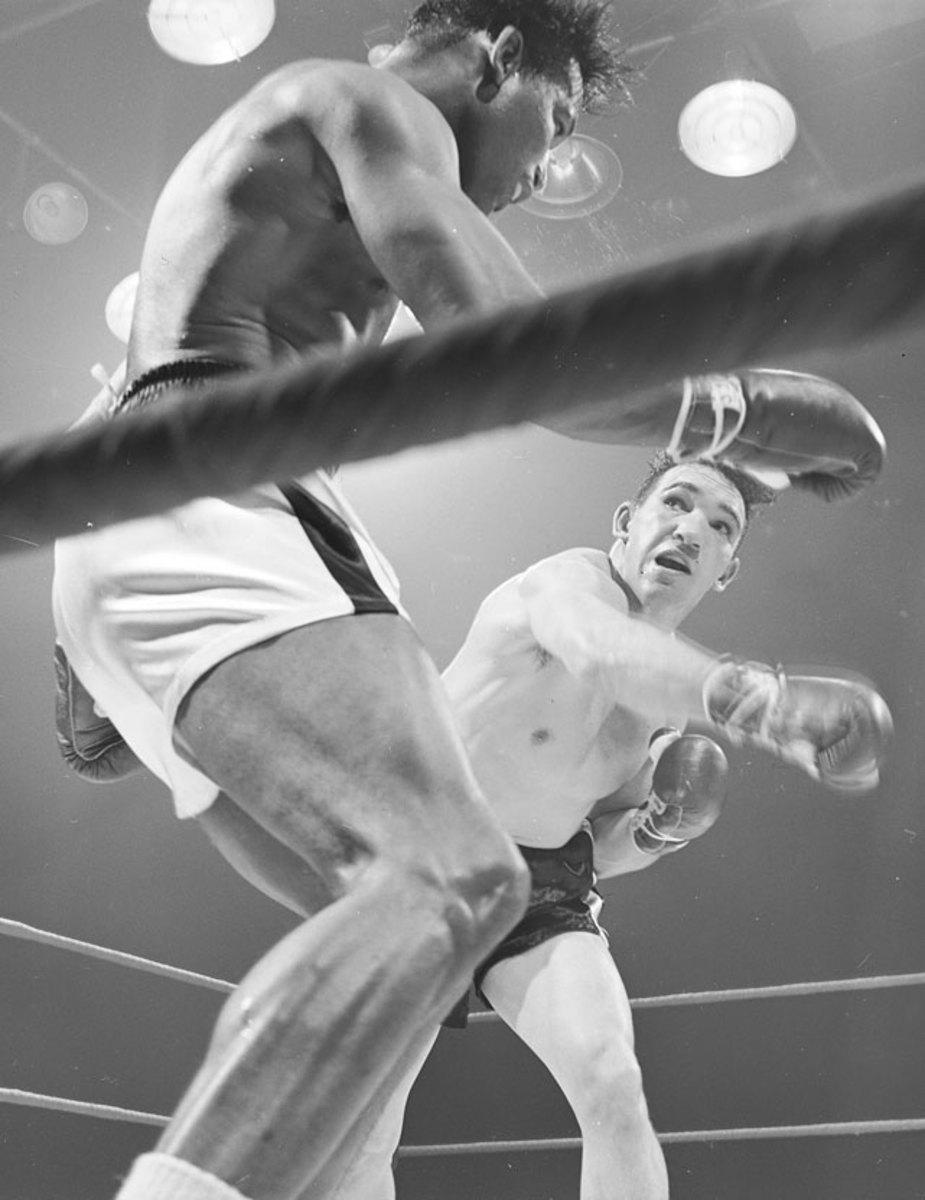
Few fighters could endure punishment like Fullmer ( right ), a Mormon from West Jordan, Utah. The future Hall of Famer upset Sugar Ray Robinson for the title on a unanimous decision at Yankee Stadium, but held the title less than four months before losing it to Robinson in the rematch.
Sugar Ray Robinson

Robinson ( right ) returned to the ring in 1955 after a two-and-a-half-year retirement and quickly earned a shot at Bobo Olson for the title. The future Hall of Famer won it on a second-round knockout at Chicago Stadium.
Carl "Bobo" Olson
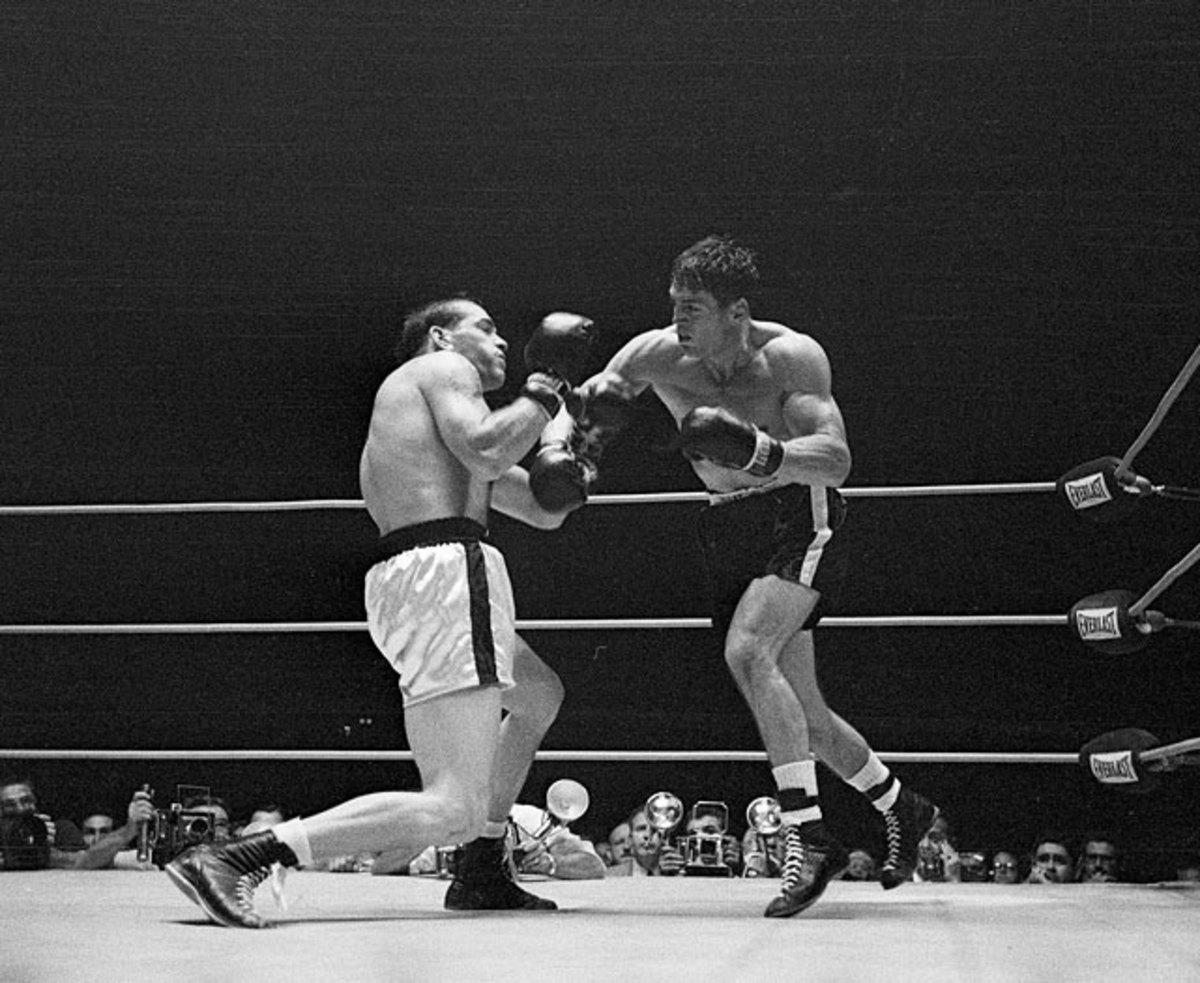
When Robinson retired for the first time, in December 1952, Olson ( right ) won a four-man tournament for the vacant middleweight title. He defeated Paddy Young before outpointing Randy Turpin at Madison Square Garden for the recognized lineal title.
Sugar Ray Robinson

Robinson ( left ) regained the middleweight title with a 10th-round knockout of Randy Turpin before 60,000 fans at the Polo Grounds. He'd defend it successfully against Bobo Olson and Rocky Graziano before moving up in a failed bid for Joey Maxim's light heavyweight title. Shortly thereafter, Robinson retired to pursue a career in show business.
Randy Turpin
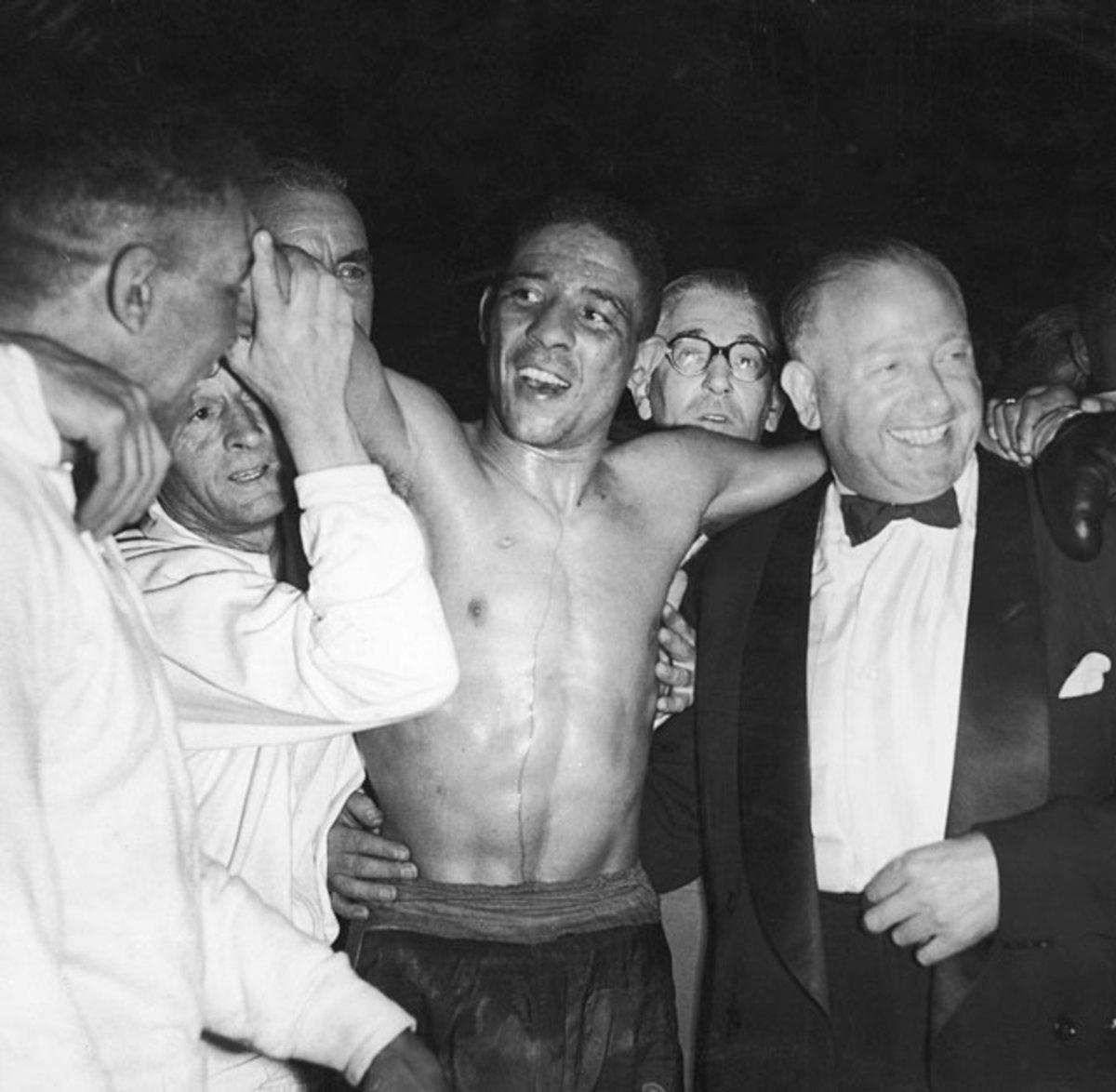
One of the most exciting British fighters in history, Turpin became a national hero with an upset victory over Sugar Ray Robinson for the title. His title reign lasted just 64 days, when Robinson won their rematch.
Sugar Ray Robinson

Longtime welterweight champion Robinson ( right ) moved up to challenge Jake LaMotta for the middleweight title on Feb. 14, 1951 -- a gruesome bout known darkly as the St. Valentine's Day Massacre. With a dazzling combination of speed and power, Robinson stopped LaMotta after 13 rounds in the sixth and final bout of their legendary series.
Jake LaMotta
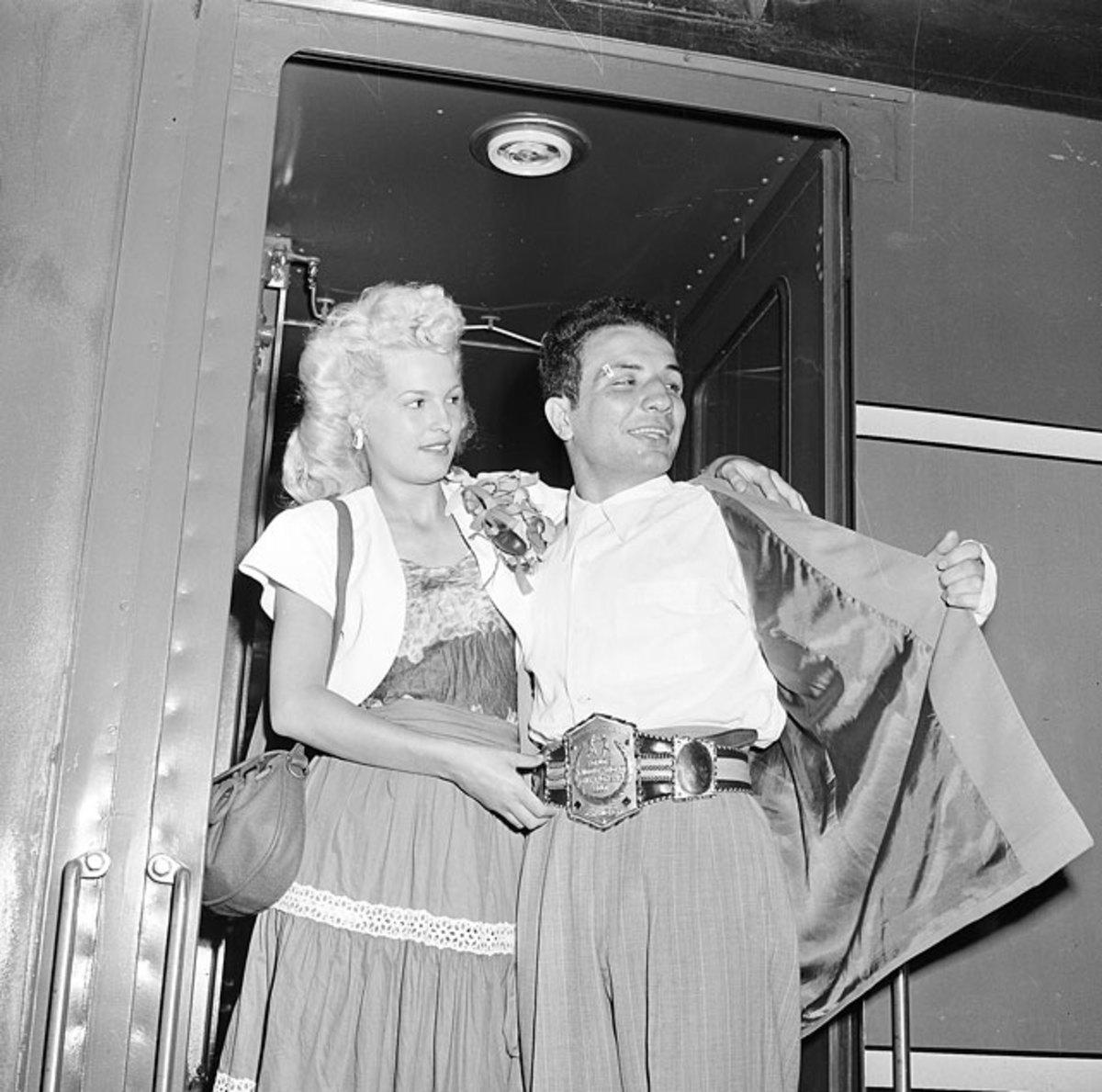
The Bronx Bull won the title from Marcel Cerdan of France and defended it twice before losing to Sugar Ray Robinson in their fateful sixth meeting. LaMotta was famously portrayed by Robert De Niro in Martin Scorsese's Raging Bull in 1980.
Marcel Cerdan
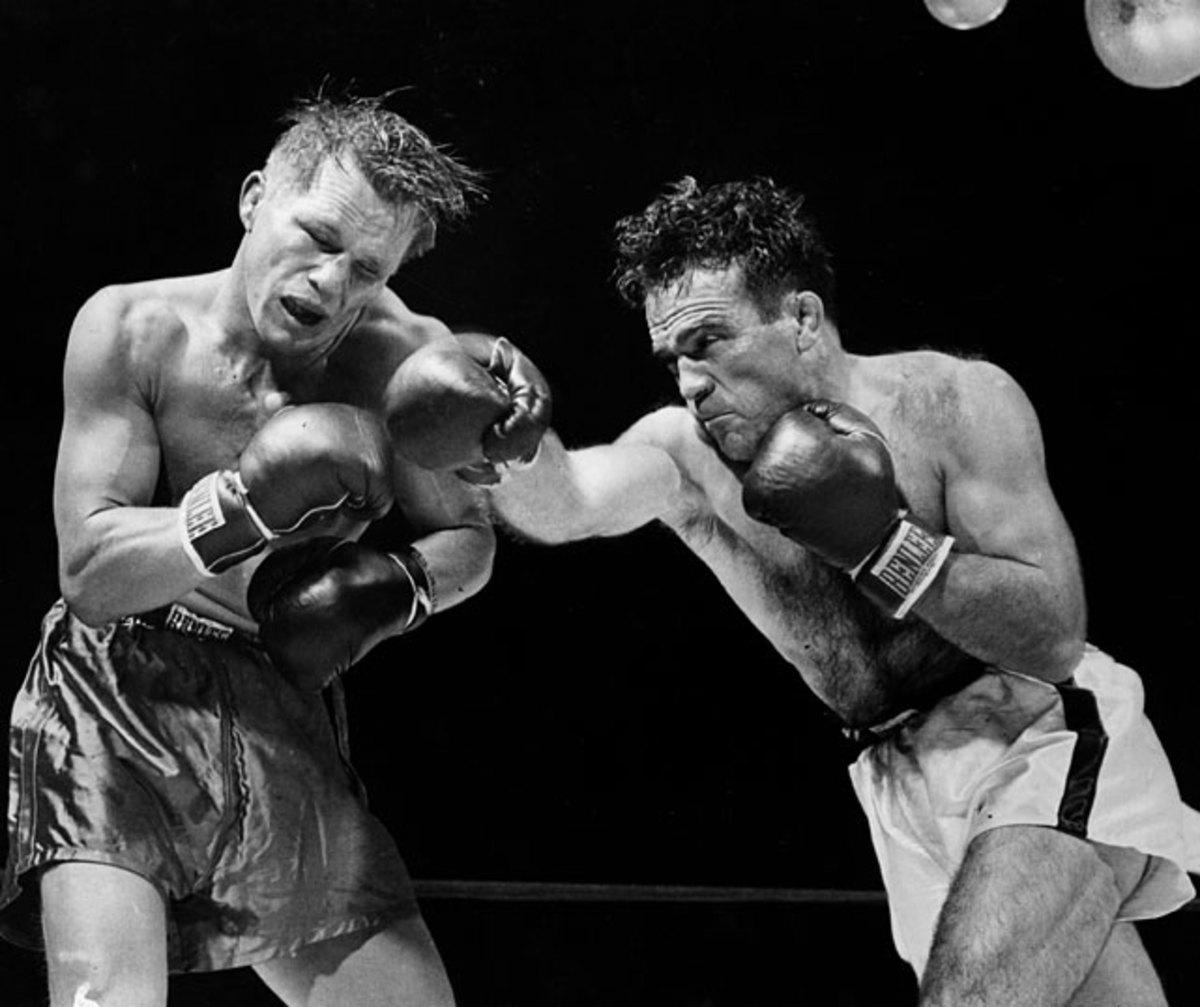
Cerdan ( right ) stopped Tony Zale for the title at Roosevelt Stadium in Jersey City, N.J., but lost it to Jake LaMotta less than nine months later. It was the last fight of Cerdan's career. He signed a contract for a rematch with LaMotta, but died in a plane crash while traveling to visit girlfriend Edith Piaf in New York.
Tony Zale
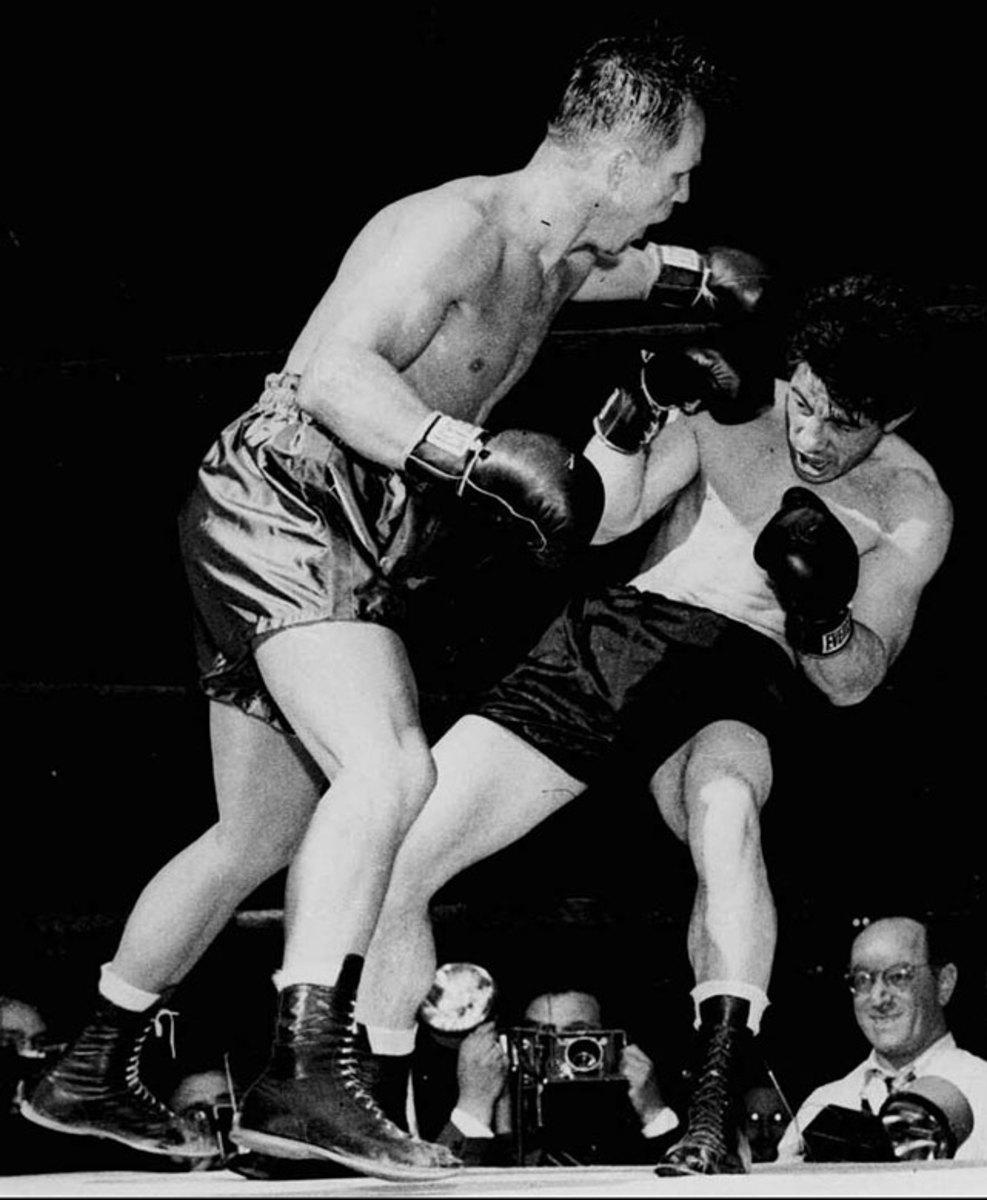
Known famously as the Man of Steel, Zale ( left ) regained the middleweight title with a third-round knockout in the rubber match of a legendary trilogy with Rocky Graziano.
Rocky Graziano
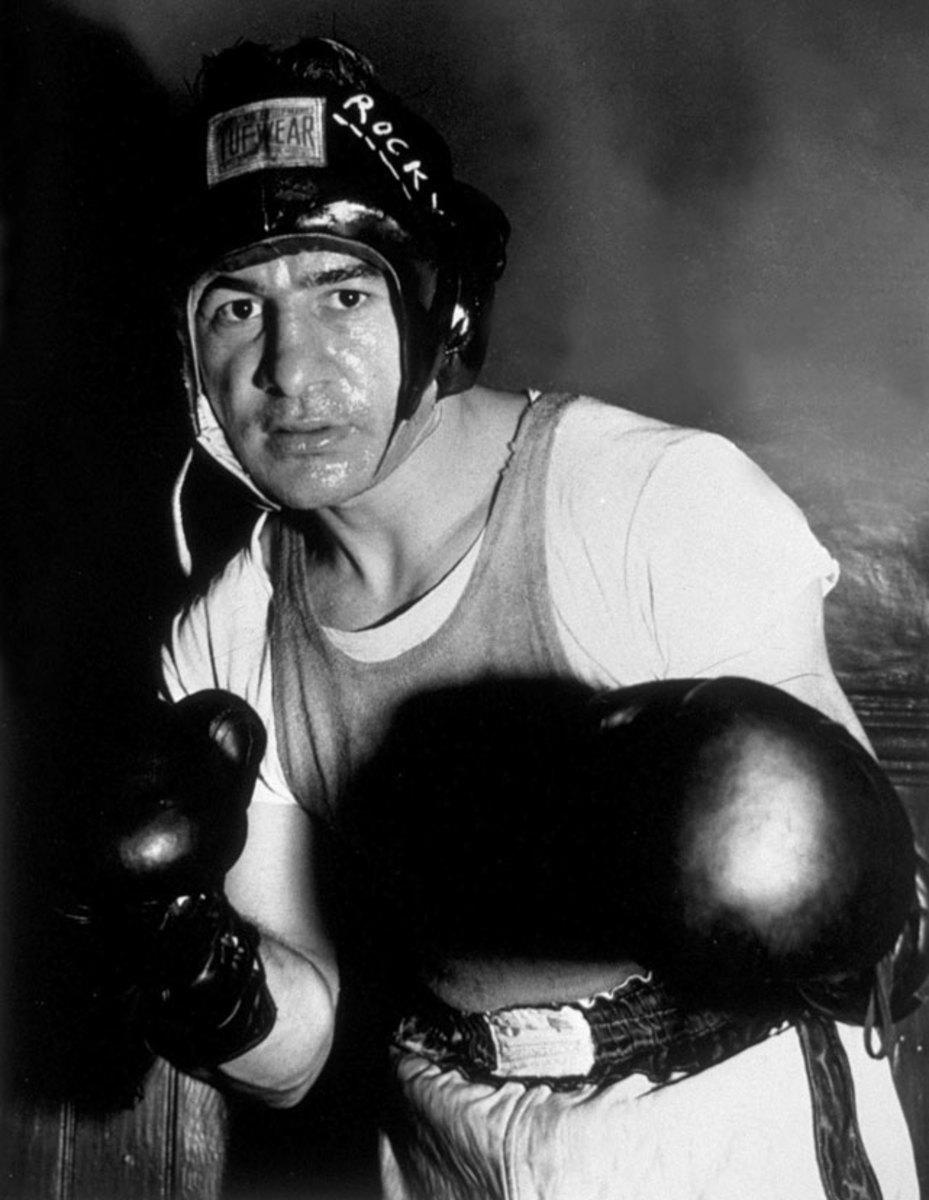
One of the most popular fighters of all time, Graziano overcame a troubled youth on New York's Lower East Side to become middleweight champion with a sixth-round stoppage of Tony Zale in the second of their three meetings. His life story was the basis of the 1956 film Somebody Up There Likes Me .
Tony Zale

The Gary, Ind., native emerged as the universally recognized middleweight champion with a victory over New York State champion Georgie Abrams. After joining the Navy and serving until the end of World War II, Zale was still hailed as champion entering a 1946 title defense against Rocky Graziano. He retained the title on a sixth-round knockout, but lost it 10 months later in the rematch. Ring magazine declared each the Fight of the Year for 1946 and '47, respectively.
